Gompas in Ladakh and their Cultural Significance
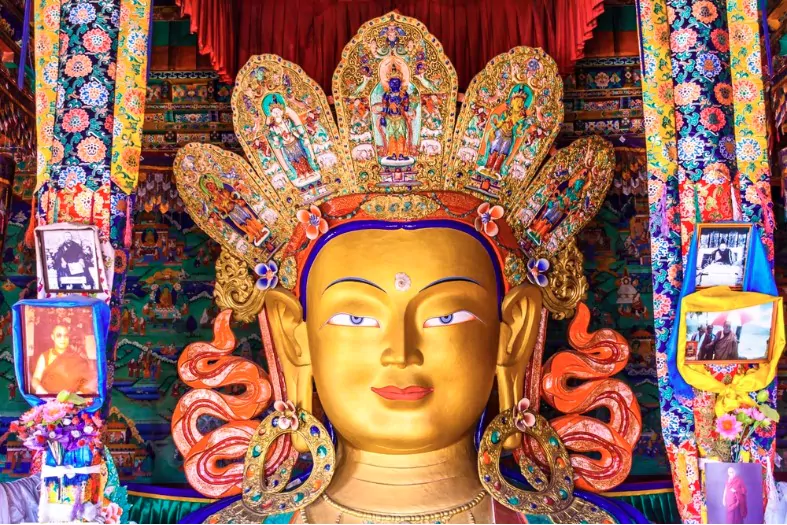
The surreal landscapes of Ladakh, nestled amid the Himalayan and Karakoram ranges, are home to the ancient Buddhist monastic institutions known as “Gompas”. The term “Gompa” is a Tibetan word, which directly translates to “solitary place” or “remote nook.” Gompas in Ladakh are indeed solitary places of solitude and spirituality that impart a unique sense of tranquillity to their surroundings. They stand as a testament to Ladakh’s rich cultural heritage, painting a vibrant mosaic of spirituality, culture, and architectural brilliance.
1 The Meaning of Gompas
A Gompa in Ladakh is more than just a religious institution; it is a centre of learning, a hub for community gatherings, and a repository of the region’s art, culture, and history. It is a space where monks dedicate their lives to spiritual development, and where the local communities come together to celebrate festivals and rituals. Gompas in Ladakh serve not only as places of worship but also as institutions preserving and propagating the wisdom of Buddhism across generations.
2 Gompas in Ladakh: Aesthetic and Architectural Marvels
Gompas in Ladakh are architectural marvels blending seamlessly into the stark, rugged landscapes. Most Gompas are perched on hilltops or craggy cliffs, overlooking picturesque valleys. These structures showcase intricate and colourful murals, frescoes, statues, and thangkas (Buddhist cloth paintings) that depict the life and teachings of Buddha and various other Buddhist deities.
The intricate design of each Gompa in Ladakh reflects the distinct style of Tibetan architecture. Large assembly halls, known as Dukhangs, form the heart of the Gompas. These halls house impressive statues of Buddha, surrounded by rows of seating for monks to meditate and conduct prayer sessions.
3 Exemplary Gompas in Ladakh
Ladakh boasts a multitude of Gompas, each unique in its way. Some of the prominent ones are the Thiksey Gompa, Hemis Gompa, Spituk Gompa, Alchi Gompa, and Lamayuru Gompa.
Hemis Monastery
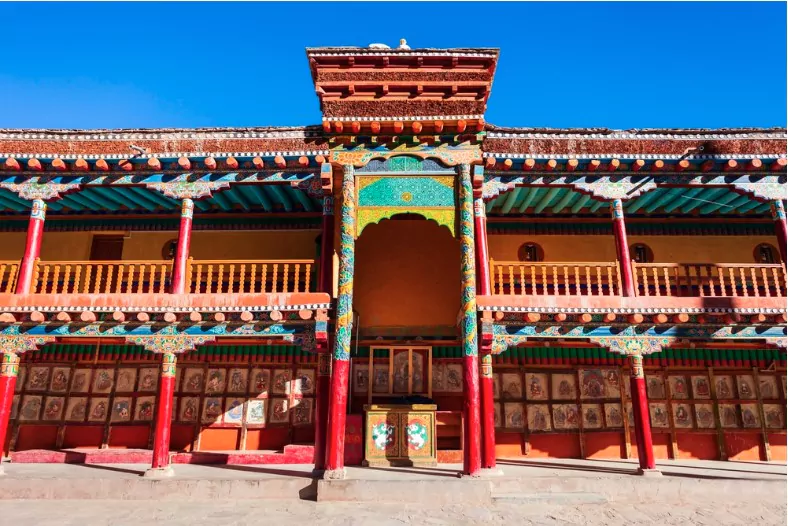
The Hemis Monastery is the largest in Ladakh, both in terms of its physical structure and the number of lamas or monks. This 17th-century monastery is perched at an elevation of 3,600 metres, surrounded by a panoramic view of the mountains. Hemis houses a rich collection of ancient relics like the statue of Lord Buddha made of copper, stupas studded with precious stones, and a large collection of thangkas, many of which are said to be made in pure gold. The Hemis Festival, held in June or July, celebrates the birth anniversary of Guru Padmasambhava with traditional music, mystic mask dances, and a bustling fair.
Thiksey Monastery
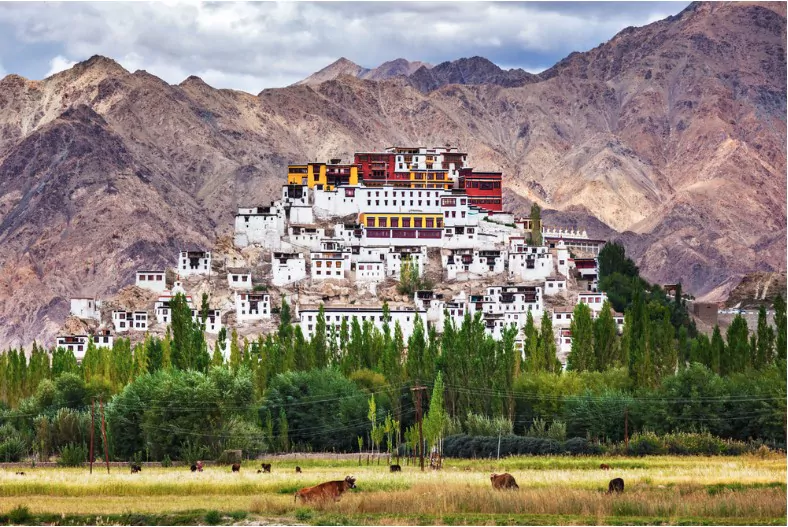
Resembling the Potala Palace in Lhasa, Tibet, Thiksey Monastery is a 12-story complex housing numerous stupas, statues, thangkas, wall paintings, and an extensive library. The monastery’s Maitreya Temple, installed to commemorate the visit of the 14th Dalai Lama, houses a magnificent 15-meter-high statue of Maitreya Buddha. Thiksey Monastery also offers a mesmerising view of the valleys around, especially at sunrise.
Diskit Gompa
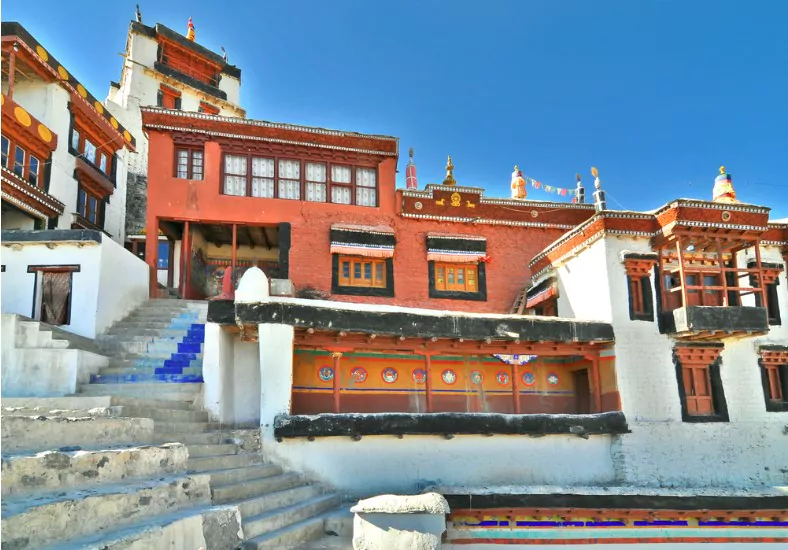
The Diskit Monastery is perched in the Nubra Valley and dates back to the 14th century. It offers an extraordinary view of the Nubra Valley. Its key highlight is a majestic 32-meter statue of Maitreya Buddha, facing down the Shyok River towards Pakistan. Diskit Gompa is also home to a school run by the Tibetan government-in-exile for local Ladakhi children. The monastery’s annual Dosmoche Festival, usually held in February, involves a grand celebration with a traditional masked dance.
Spituk Gompa
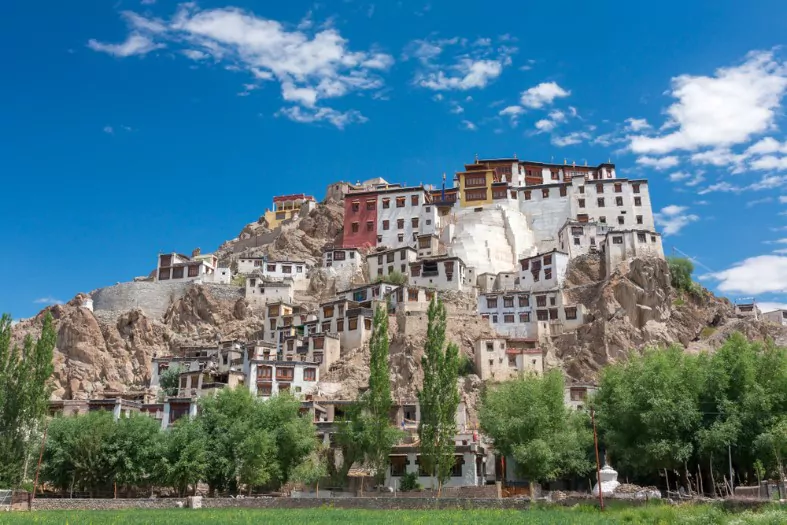
Spituk Monastery, founded in the 11th century by Od-de, the elder brother of Lha Lama Changchub Od, is home to 100 monks. The three chapels in the monastery contain numerous statues, including those of Buddha and Mahakaal. The monastery houses an impressive collection of thangkas, ancient masks, and antique arms. The Spituk Festival held annually, features the cham dance performed by the monks.
Alchi Gompa
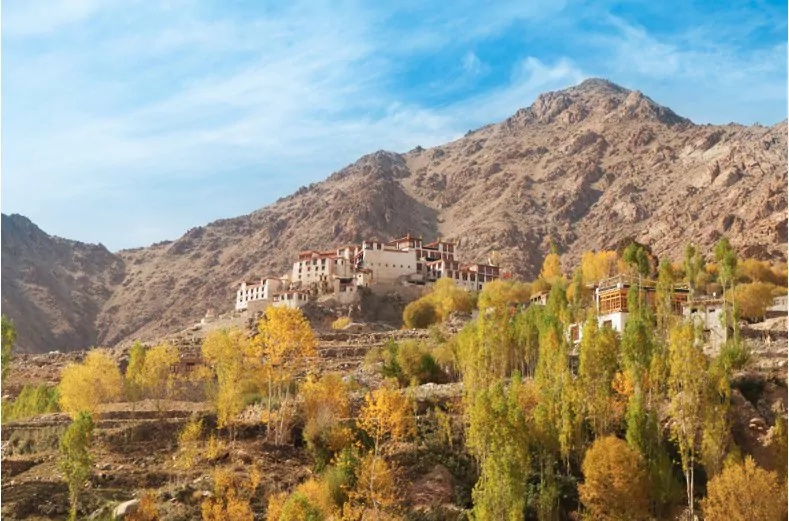
Alchi Monastery built between the 10th to 11th centuries, is situated on the banks of the Indus River. It stands out due to its unique Indian-style architecture, rather than the usual Tibetan architectural style found in Ladakh. Inside the monastery, one can find massive statues of the Buddha and elaborate wood carvings and artwork which reflect the Hindu and Buddhist artistic styles of the period.
Lamayuru Gompa
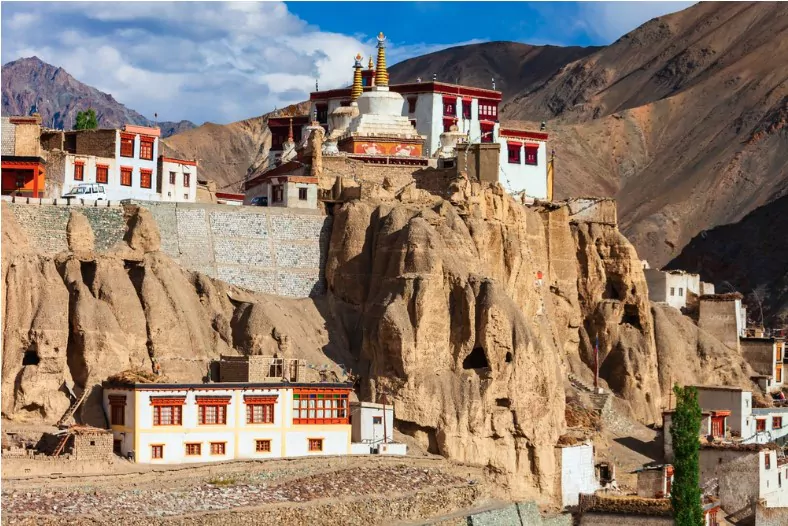
Dating back to the 11th century, the Lamayuru Monastery, or Yuru Gompa, is one of the oldest monasteries in Ladakh. It is home to numerous thangkas, wall paintings, and a cave where the saint Naropa meditated. The monastery is known for its annual Yuru Kabgyat Festival, a two-day event featuring sacred masked dances that draw tourists from across the globe.
Shey Gompa
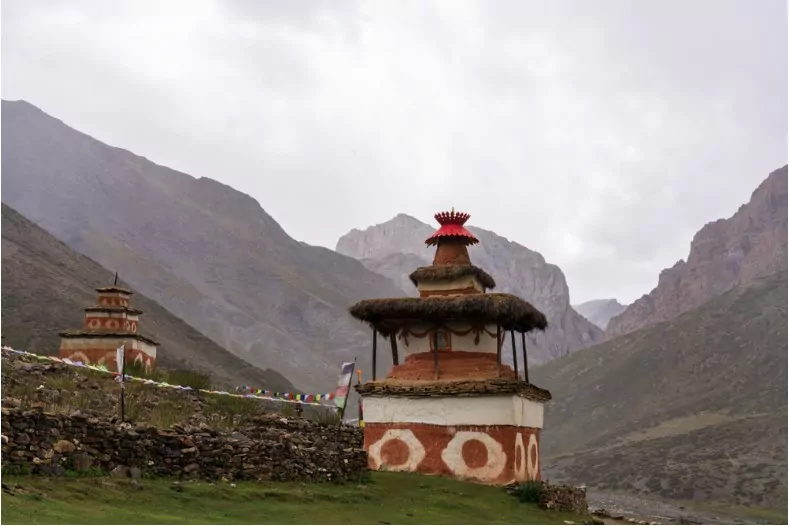
Located 15 kilometres from Leh, the Shey Monastery, also known as Shey Palace, was the royal residence of the Ladakh monarchs. The monastery is famous for its 12-metre high gold-plated Shakyamuni Buddha statue, made of copper with blue hair, the second largest in Ladakh. The statue was erected by King Deldan Namgyal in memory of his father, Singay Namgyal. The Shey Doo Lhoo and Shey Rupo festivals held in the monastery in the first and second months of the Tibetan calendar respectively are quite popular.
4 Wrapping Up
Gompas in Ladakh serve as the heart and soul of Ladakh, offering a profound exploration of spirituality, history, and culture. Visiting these Gompas, one can’t help but be awed by the sheer grandeur of their architecture and the powerful serenity they exude. The experience of stepping into a Gompa in Ladakh is an immersion into the rhythmic dance of divinity and human endeavour, etching unforgettable impressions onto the canvas of your consciousness.
Whether you are a spiritual seeker, history buff, or culture enthusiast, the Gompas in Ladakh offer a myriad of experiences that transcend the mundane, taking you on a mystical journey into the depth of Buddhist wisdom and the warmth of Ladakhi hospitality.
While each Gompa in Ladakh is unique, they all share the common purpose of enlightening beings and instilling in them values of compassion, wisdom, and inner peace. This divine purpose, combined with their architectural splendour and their role as custodians of Ladakh’s rich cultural heritage, makes the Gompas in Ladakh truly captivating symbols of spirituality amidst the majestic Himalayas.
Community Q&A
About This Article
This article has been viewed 423 times.



